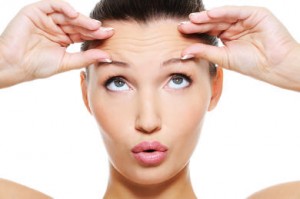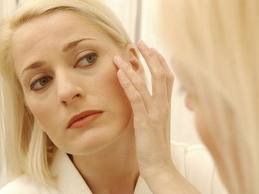 Everyone wrinkles at the same rate and there’s not really much we can do to prevent it, right? Wrong. There are certain habits that can help you avoid premature wrinkles, making your skin look younger (and healthier) longer. Tanning is one of the leading causes of premature wrinkles. When you go tanning, ultraviolet rays are penetrating deep layers of the skin, weakening the skin’s support structure. Wearing lotion with SPF 15 or higher will help protect your skin, and should become part of your routine. Smoking also accelerates the skin’s aging process, and early wrinkling has been found in smokers as young as 20! The smoke from tobacco also turns the skin an unhealthy color and texture, so the best thing you can do for your skin and your body is to quit smoking!
Everyone wrinkles at the same rate and there’s not really much we can do to prevent it, right? Wrong. There are certain habits that can help you avoid premature wrinkles, making your skin look younger (and healthier) longer. Tanning is one of the leading causes of premature wrinkles. When you go tanning, ultraviolet rays are penetrating deep layers of the skin, weakening the skin’s support structure. Wearing lotion with SPF 15 or higher will help protect your skin, and should become part of your routine. Smoking also accelerates the skin’s aging process, and early wrinkling has been found in smokers as young as 20! The smoke from tobacco also turns the skin an unhealthy color and texture, so the best thing you can do for your skin and your body is to quit smoking!
Sun exposure and smoking are the fairly obvious skin detriments, but there are more culprits to wrinkling than meets the eye. Daily facial contractions, such as frowning, smiling, and squinting are thought to cause crow’s feet and frown lines. Wearing sunglasses or corrective eyewear to avoid squinting, while also relaxing your resting face, will help minimize extraneous contractions. Yo-yo dieting is another surprising factor in wrinkle development. Some experts attest that years of losing weight and gaining the weight back can damage the skin’s elastic structure. Losing or gaining weight in a healthy, steady manor can ease your skin into accepting the size of your new body.
Your skin is your body’s largest organ and needs protecting. Eating a balanced diet and staying hydrated with plenty of water will help keep your skin healthy. While you can never truly rid yourself of wrinkles entirely, protecting your skin can help minimize signs of aging. Take this wrinkles quiz to see how much you know about your skin!
Source: WebMD

 On Monday, The Scientist printed a
On Monday, The Scientist printed a  "In postmenopausal women the appearance of the skin may offer a glimpse of the skeletal well-being, a relationship not previously described," said Lubna Pal, MD, a reproductive endocrinologist at Yale School of Medicine, New Haven, Conn.
"In postmenopausal women the appearance of the skin may offer a glimpse of the skeletal well-being, a relationship not previously described," said Lubna Pal, MD, a reproductive endocrinologist at Yale School of Medicine, New Haven, Conn.